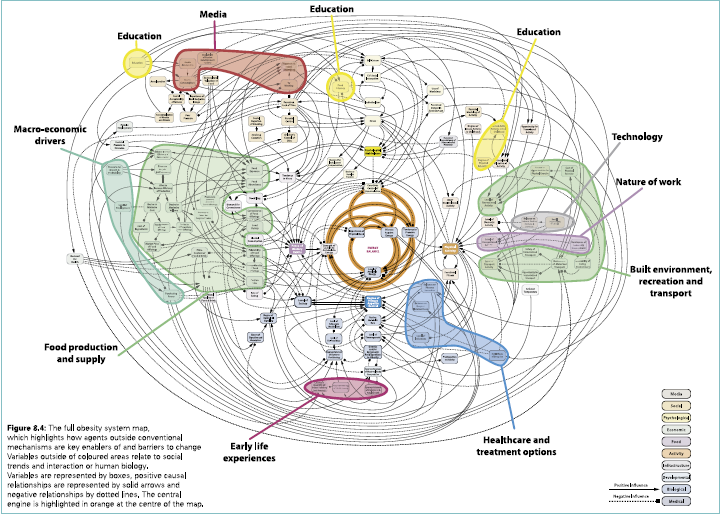The next in the blog series from Newcastle University Societal Challenge Theme Institutes giving recommendations for targets and indicators of the UN Sustainable Development Goals, is from Dr Andrew Walton, Lecturer in Political Philosophy in School of Geography, Politics and Sociology.
In the current proposal for the Sustainable Development Goals, Goal 10 states the aim to ‘reduce inequality within and among countries’. For many (good) reasons, much articulation of this goal has focused on its first component – reducing inequality between co-citizens within countries. But it is important also to consider what should be the appropriate target for the second component. What should be our aim and measure in reducing inequality amongst countries? My suggestion is to lessen the gap in per capita national wealth – the value of each country’s financial and physical assets.
Measures of (in)equality
The basic idea of measuring (in)equality involves comparing the circumstances of certain actors. Thus, any conceptualisation of equality must specify an answer to two questions:
- Which actor should be compared?
- What aspect(s) of their circumstances should be compared?
There are different ways to conceptualise and measure (in)equality historically [1]:
| Model | Actor | Aspect(s) |
| Gross Domestic Product (GDP) | Countries | Final value of goods & services produced within nations’ borders |
| GDP/capita | ‘Average’ citizen (country ÷ population) | Final value of goods & services produced within nations’ borders |
| Income | Persons or households | Disposable income / expenditure |
| Wealth | Persons or households | Assets, including financial holdings and physical goods, such as real estate |
Perhaps obviously, these models ask us to think about (in)equality in rather different ways. For example, on current figures using GDP suggests that China is better-off than Switzerland, whereas GDP/capita suggests the opposite [2]. Similarly, both GDP and GDP/capita suggest that Brazil is a relatively well-off country, but measuring income and wealth highlight that it is home to individuals who are worse-off than almost the entire populations of similarly well-off countries [3].
What these differences highlight is that asking which model we should use to measure (in)equality pushes us to explore deeper philosophical questions about our underlying reasons for being concerned with (in)equality, and to find a measure that is tailored to these concerns. My suggestion here is that some of our underlying concerns point in the direction of exploring how countries compare in per capita wealth [4].
Why compare countries and why compare them per capita?
For many people it will seem obvious that there is something important about whether their country is well-off. It is sometimes thought important for ensuring that their country is respected by others and very commonly because it has a significant impact on whether its citizens have comfortable lives.
Some argue that comparing national circumstances is a mistake. They suggest that, ultimately, it is only the welfare of people that matters and, as noted above, cross-country comparisons can hide that some individuals within countries are badly-off. Advocates of this view might argue that Goal 10 should be collapsed into one goal: measuring (in)equality amongst individuals worldwide.
We should reject the conclusions of this argument. Because the SDGs also consider (in)equality within countries and have other goals targeting aspects of individual welfare, they will not overlook the worry mentioned above. Meanwhile, because one thing that benefits people’s welfare is to participate in the collective decisions and development of their nation, even this individual-centred view can acknowledge the importance of a world involving country groupings and, thus, the additional relevance of cross-country comparisons.
However, we should accept the point that countries are, in essence, valuable only insofar as they benefit their populations and our comparisons between them should reflect this concern. It is for this reason that our cross-country comparison should focus on a per capita measure, which looks at how some aspect of a country’s circumstance relates to its people.
Why compare wealth?
Some possible ways we could make per capita inter-country comparisons would be the following:
| Model | Actor | Aspect(s) |
| GDP/capita | ‘Average’ citizen | Final value of goods & services produced within nation’s borders |
| Wealth/capita | ‘Average’ citizen | Assets, including currency, stock, bond holdings and physical goods, such as land, natural resources, and rights to global commons |
| Capabilities | ‘Average’ citizen | Human development indicators, such as life expectancy, education, income |
A reasonable case could be made that reducing inequality between countries in any of these respects would be a worthwhile target. Nevertheless, I proposed at the beginning of this post that the goal should be to focus on wealth/capita. Two related points support this view.
First, neither GDP/capita nor capabilities takes full account of the aspects of a country’s circumstance that affects the welfare of its population. To take two clear examples, currency reserves and natural resources, which are considered in wealth/capita, but not these other measures, both allow a country to provide its population with economic security and future consumption [5].
Second, many of the assets that countries hold are a matter of luck. For example, no country did anything to entitle it to the oil or gold that lies within its borders and, indeed, much of their economic wealth arises from the fortunes of the market.
In cases where there is a good that many actors desire and which no actor is entitled automatically to own, it seems sensible to distribute that good equally. If Isaac and I are sat beneath a tree feeling hungry when an apple falls on his head, it seems reasonable for us to share it. Similarly, insofar as it is valuable for countries to hold financial and physical assets and their current holdings have arisen from good fortune, there is a reason to aim for equalising their shares.
Moving towards international equality
A more fully fledged case for measuring inter-country (in)equality in terms of per capita national wealth is that achieving parity in this regard can, under certain conditions, represent a truly idealistic aim. There is a moral argument that a distribution of assets is fair if it mirrors what each relevant actor would have bought with equal purchasing power in the context of all goods being priced at a market-clearing equilibrium [6]. Such a distribution, in the international context, would entail equality in per capita national wealth and it is fair because it reflects the equality of all parties in their access to these goods and allows them to shape their holdings according to what they believe is worth having.
Realising this aim is perhaps a more long-term project than for the framework of the SDGs. Nevertheless, it helps show the value of building our understanding of (in)equality in national wealth and beginning to reduce it, whilst casting light on some important steps for moving towards this goal:
Pursue (the second component of) Goal 10 by:
- Establishing a national wealth index and collect data on countries’ standings.
- Setting a target of reducing inequality in per capita holdings.
Connect these targets and their longer-term aim to:
- Adding impetus to Goal 16.7 of ensuring responsive, inclusive, participatory, and representative decision-making, in order for countries’ choices about asset holdings to reflect the collective interests of their people.
- Helping articulate Goals 17.10-17.12 on shaping international trade towards an equal and equilibrated market.
Dr Andrew Walton is lecturer in political philosophy at Newcastle University. His main research interests are in global justice, liberal-egalitarian and socialist thought and questions of justice in public policy.
[1] The essential ideas used to construct this table are taken from Milanovic, B., Worlds Apart: Measuring International and Global Inequality (Princeton: Princeton University Press, 2005)
[2] These figures can be found via UN, ‘National Accounts Main Aggregates Database’, available at http://unstats.un.org/unsd/snaama/selbasicFast.asp [Accessed 17th June 2015].
[3] See, for example, Credit Suisse, ‘Global Wealth Report 2014’, available at https://publications.credit-suisse.com/tasks/render/file/?fileID=60931FDE-A2D2-F568-B041B58C5EA591A4 [Accessed 17th June 2015].
[4] This suggestion is elaborated in more detail in Walton, A., ‘On the Currency of International Equality’, forthcoming.
[5] It is worth noting that Capabilities also seems to point towards important aspects of human welfare. However, many other SDGs will pursue these kinds of concerns anyway, leaving space for the second part of Goal 10 to speak to the concerns I mention here.
[6] This view is most commonly associated with Dworkin, R., Sovereign Virtue: The Theory and Practice of Equality (Cambridge, MA: Harvard University Press, 2000).




